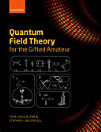The New Superconducting Electronics
H. Weinstock · Richard W. Ralston
2012年12月 · NATO Science Series E 第 251 冊 · Springer Science & Business Media
電子書
457
頁
report評分和評論未經驗證 瞭解詳情
關於本電子書
This volume is based on the proceedings of the NATO-sponsored Advanced Studies Institute (ASn on The New Superconducting Electronics (held 9-20 August 1992 in Waterville Valley, New Hampshire USA). The contents herein are intended to provide an update to an earlier volume on the same subject (based on a NATO ASI held in 1988). Four years seems a relatively short time interval, and our title itself, featuring The New Superconducting Electronics, may appear somewhat pretentious. Nevertheless, we feel strongly that the ASI fostered a timely reexamination of the technical progress and application potential of this rapid-paced field. There are, indeed, many new avenues for technological innovation which were not envisioned or considered possible four years ago. The greatest advances by far have occurred with regard to oxide superconductors, the so-called high transition-temperature superconductors, known in short as HTS. These advances are mainly in the ability to fabricate both (1) high-quality, relatively large-area films for microwave filters and (2) multilayer device structures, principally superconducting-normal-superconducting (SNS) Josephson junctions, for superconducting-quantum-interference-device (SQUID) magnetometers. Additionally, we have seen the invention and development of the flux-flow transistor, a planar three-terminal device. During the earlier ASI only the very first HTS films with adequate critical-current density had just been fabricated, and these were of limited area and had high resistance for microwave current.
為這本電子書評分
歡迎提供意見。
閱讀資訊
智慧型手機與平板電腦
筆記型電腦和電腦
你可以使用電腦的網路瀏覽器聆聽你在 Google Play 購買的有聲書。
電子書閱讀器與其他裝置
如要在 Kobo 電子閱讀器這類電子書裝置上閱覽書籍,必須將檔案下載並傳輸到該裝置上。請按照說明中心的詳細操作說明,將檔案傳輸到支援的電子閱讀器上。










